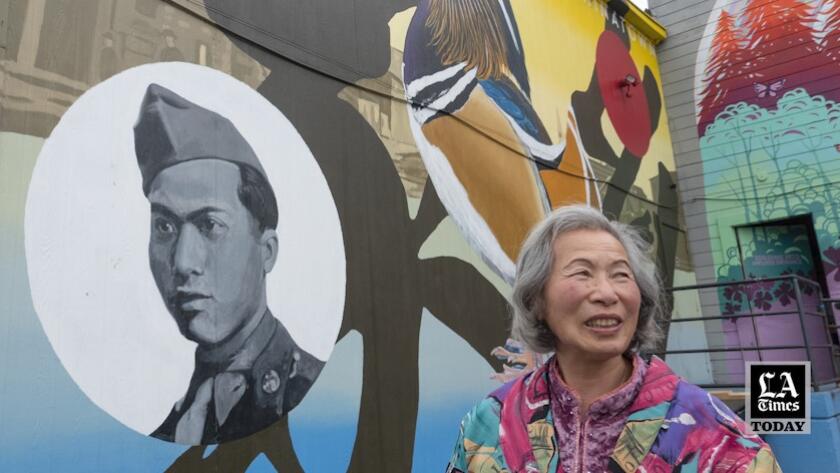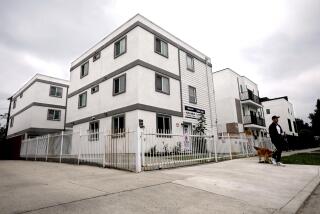
- Share via
SALT LAKE CITY — Hanging on a wall at the Inn Between is a photo of John Cal Robb, the note he wrote before he died and the blue plastic butterfly that signaled to his friends that it was his time to go.
Robb’s death was especially hard on the inn. He was a jack-of-all-trades, handy with tools and always offering to give fellow residents a ride to medical appointments. His overweight mutt, Boo Boo, still roams the facility — one of only a handful of establishments in the country dedicated to end-of-life care for homeless people.
“If you are reading this, I have ridden off into the sunset with my fishing pole in hand. Thank you for helping me get to this point,” wrote Robb, who, in the photo, wears a contemplative smile, a cigarette hanging from his mouth. “I came in a broken man with no hope and left a stronger, more compassionate and happy man. I owe this all to you.”
When Robb was dying of stomach cancer in January, the butterfly was affixed to the front of his room door.
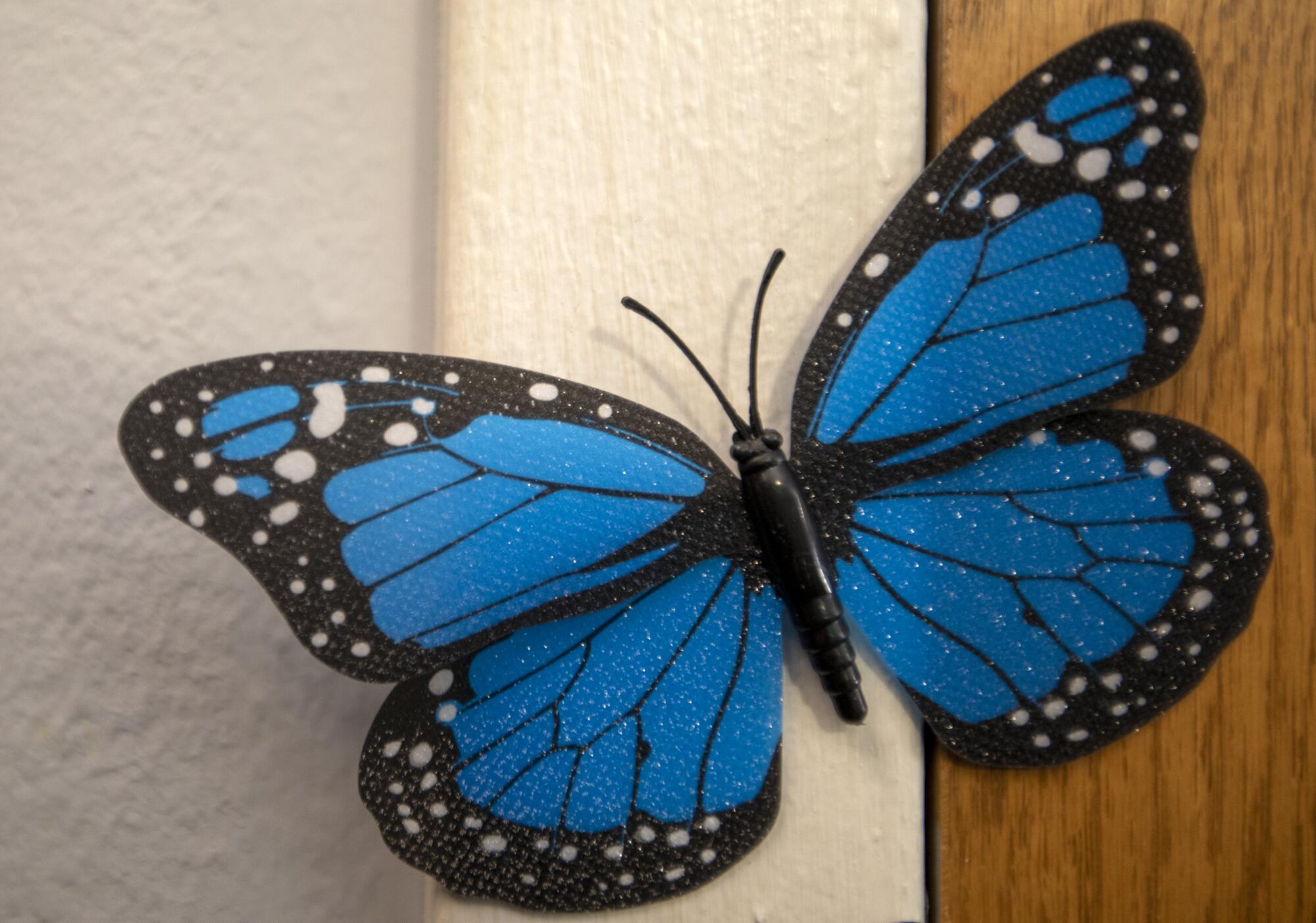
Resembling monarchs but blue and speckled with splashes of white, the butterflies signify that someone is “transitioning” and reflect the facility’s policy that “no one dies alone.”
The official mission of the Inn Between, located on a quiet street in Salt Lake City, is to “end the tragic history of vulnerable people dying on the streets.” But there’s debate about the true meaning of its name: Is it in between the streets and the hospital? Or in between heaven and Earth?
Patricia “Patti” Larsen believes it’s the latter. She has found peace there that she did not know while living on the streets.
Larsen has Stage 4 lung cancer. When she entered the facility, her intake photo captured a person barely recognizable now. In the photo, she’s thinner, and her face droops. Her hair is slicked back tight. She has a blank expression, mouth agape.
Today, her face is fuller and often smiling. Her nails are painted hot pink. She lets her thick, gray hair down.
When she arrived at the Inn Between, she had a prognosis of six weeks. That was a year and a half ago.
“We don’t look homeless anymore. We can clean up and take showers,” she offers as a sort of explanation for what healthcare and social workers have described as a remarkable transformation. “That’s something you don’t get to do out on the street.”
But it’s more than that.

The Patti before the Inn Between — jokingly referred to by staff as “Patricia,” as a kind of negative alter ego — was infamous for her outbursts; she once ripped out her colostomy bag and slung it at a worker who she said wasn’t listening to her concerns.
Today’s Patti is a hugger. She offers visitors the comfier seat on the patio, the one with a thicker cushion, despite constant pain blunted by fentanyl patches stuck to her thin arms. She is president of the resident council, and recently pushed for more coffee in the dining room on behalf of her neighbors. She gushes about her nieces, who call her “Aunt Cake,” as in patty-cake.
The changes in Larsen, who has a quiet room of her own for the first time in decades, conjure up studies about how newborn babies prove to be healthier when they are held and loved.
“It’s different here. You’re accepted,” Larsen said, arranging a line of stuffed animals she’s won at bingo atop the small couch in her room. “You’re safe, you know.”
Jillian Olmsted, volunteer-turned-executive-director of the inn, is not surprised. Time and time again, people come here to die, and end up choosing to live.
The secret, she said, is providing simple human necessities like food, shelter and community.
The Inn Between is not a homeless shelter; it feels more like a nursing home or apartment complex. Residents have been referred to the inn by local doctors because they are homeless and seeking comfort care or medical respite.
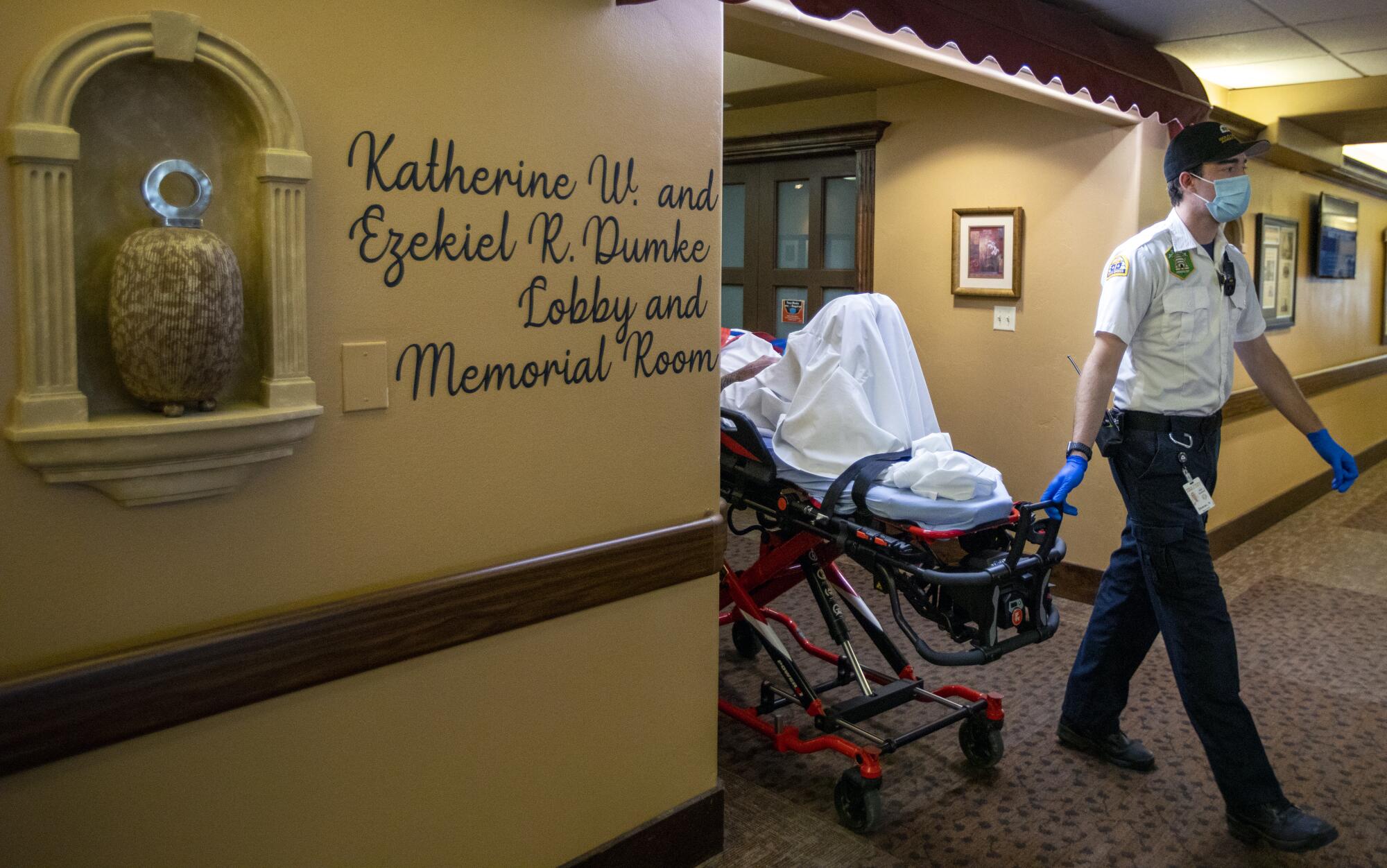
On this particular week in September, it doesn’t feel much like a hospice center, either.
There’s bingo and karaoke and a chaperoned trip to the local Greek festival. There’s a chapel, and a small room that’s been transformed into a salon, where stylists volunteer to give free haircuts every few weeks.
There have been two weddings held here, after a few residents hit it off.
Olmstead is a steadying presence who never stops pacing the beige hallways of the 50-bed facility, seemingly impossible to upset. She showed no signs of exasperation as she checked on nurses and volunteers and juggled requests for laundry detergent, a new leaf blower and an ambulance call.
“Looking good,” she said to a resident who was taking vacuum duties very seriously. “Make sure you don’t overdo it, you’ve been running around this morning.”
He complimented her outfit, and told her she looked good today. “What do I usually look like?” she joked.
It’s not always bustling like this, though. Some days, there are a lot of blue butterflies.
“Three weeks ago, we had three people actively dying and others on the cusp,” Olmsted said. “It was a different feeling around here.”
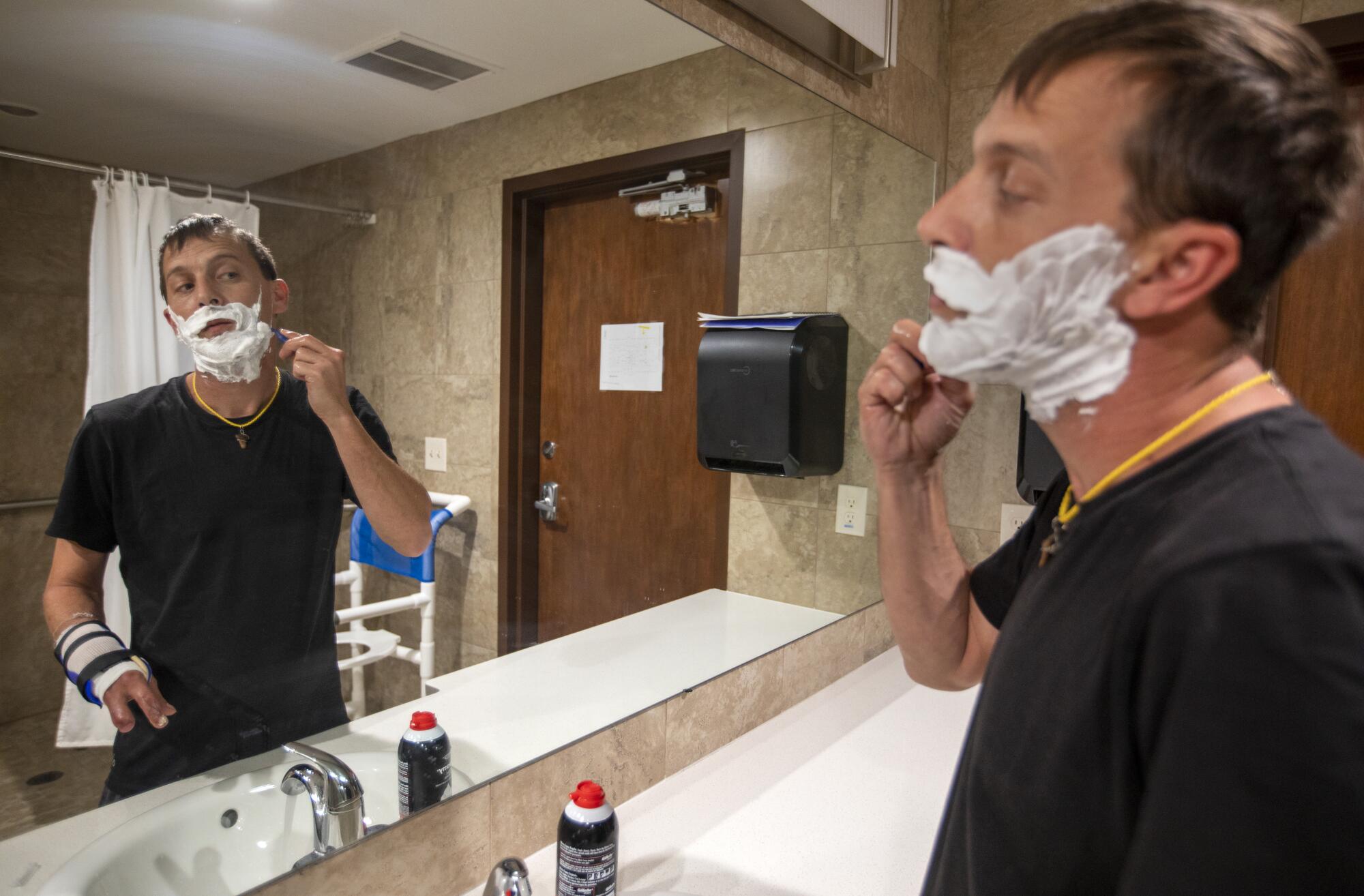
More than 700 miles west, just outside of Sacramento, plans for a facility much like the Inn Between have divided a community.
“It’s unacceptable to build something like this right across from a school,” Victor Alvarez, a father of two young daughters, said at a Twin Rivers Unified School District board meeting in July.
The school board voted to oppose the building of Joshua’s House, which is expected to be the first hospice center for homeless people in California and on the West Coast. Board members worried that the facility — involving six, small, manufactured homes — would one day expand beyond hospice care; its proximity to an elementary school, the board said, “may result in impacts that impede the educational progress and environment” of students.
Frustrated board members and parents pressed Joshua’s House planners about a wrought iron fence, the visiting policy and how medications would be stored. An online petition with more than 600 signatures called it “a noble cause” but in a “wrong” location, and signatories warned of “predators.”
“They keep saying they don’t want their children to walk by Joshua’s House, and I remind them that now, people are dying on the streets. Would you rather your child step over a dead person to go to school?”
— Marlene Von Friederichs-Fitzwater, executive director and founder of Joshua’s House
But some local residents defended the effort. At the July meeting, a frustrated Marbella Sala, president of the local neighborhood association, shot back at critics. “They’re there to receive care in their last moments of life,” she said. “They’re not going to go out and stab anyone.”
The school board has no authority over the location of the project, and plans are on schedule to open in January even as it is still short $400,000 in fundraising goals.
Marlene Von Friederichs-Fitzwater, the executive director and founder of Joshua’s House, named for her grandson who died of an overdose while living on the streets in 2014, said she does not understand the opposition, emotionally or intellectually.
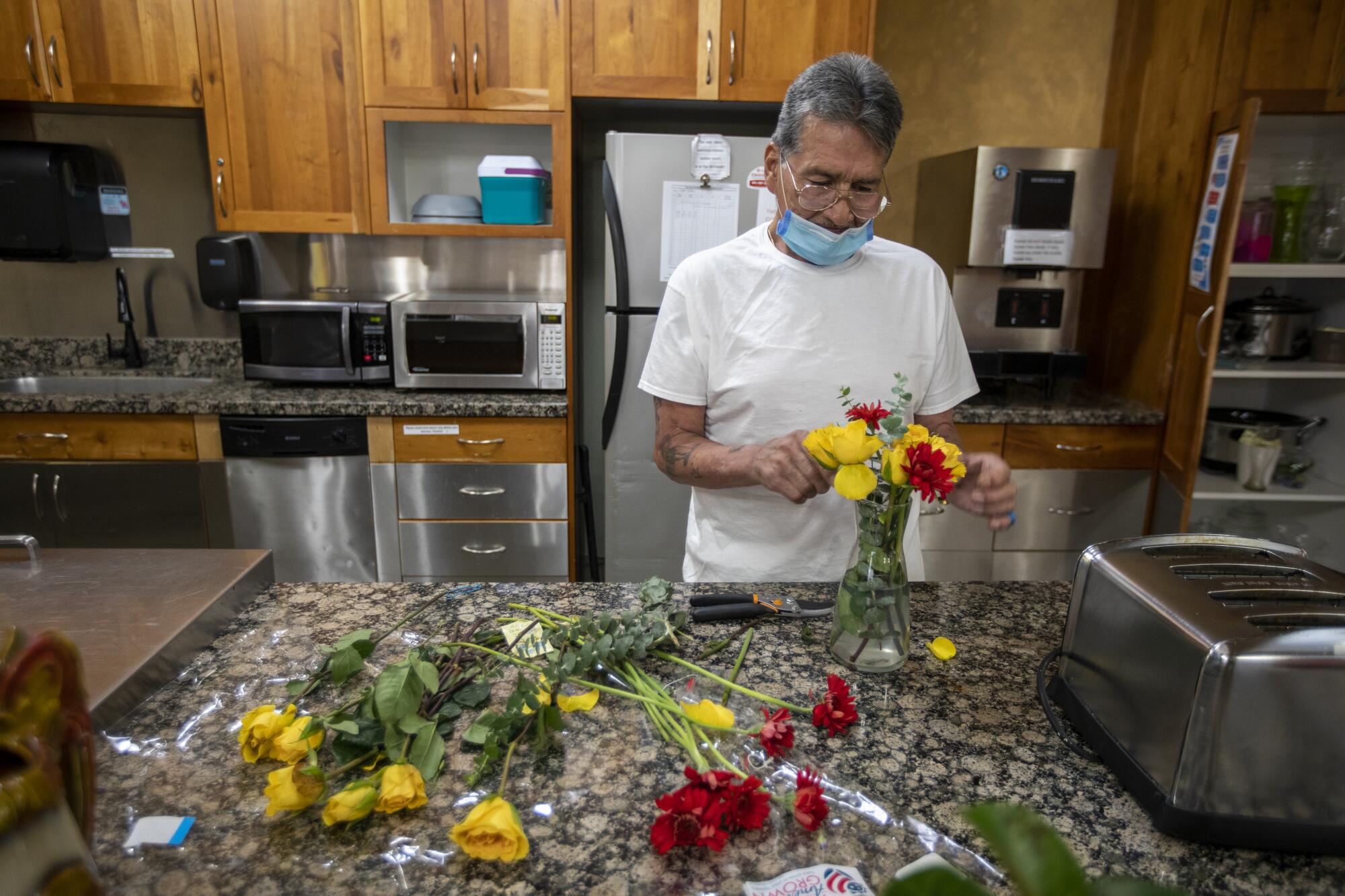
“They keep saying they don’t want their children to walk by Joshua’s House, and I remind them that now, people are dying on the streets. Would you rather your child step over a dead person to go to school?” said Von Friederichs-Fitzwater, who visited the Inn Between for inspiration. “It’s just so wrong. How do you get them to understand?”
In 2020, at least 137 people died in Sacramento County who were homeless, and more than half of those people died outdoors, according to a report released by the Sacramento Regional Coalition to End Homelessness.
In Los Angeles County, the numbers are greater: 1,988 people living homeless died last year, according to a report released by public health officials in April.
While Utah and California have both launched ambitious programs to curb homelessness, end-of-life care for the population is still largely uncharted territory, said Debbie Thorpe, founder of the Inn Between.
“Most hospice care takes place in individuals’ homes supported by family members but with the homeless, that’s just not possible,” said Thorpe, who has worked as a palliative care nurse for 40 years.
In Sacramento, misinformation spiraled out of control about the intentions of Joshua’s House, even as its future residents are unlikely to often leave the facility in their last days of life, said City Councilman Jeff Harris, a proponent of the program.
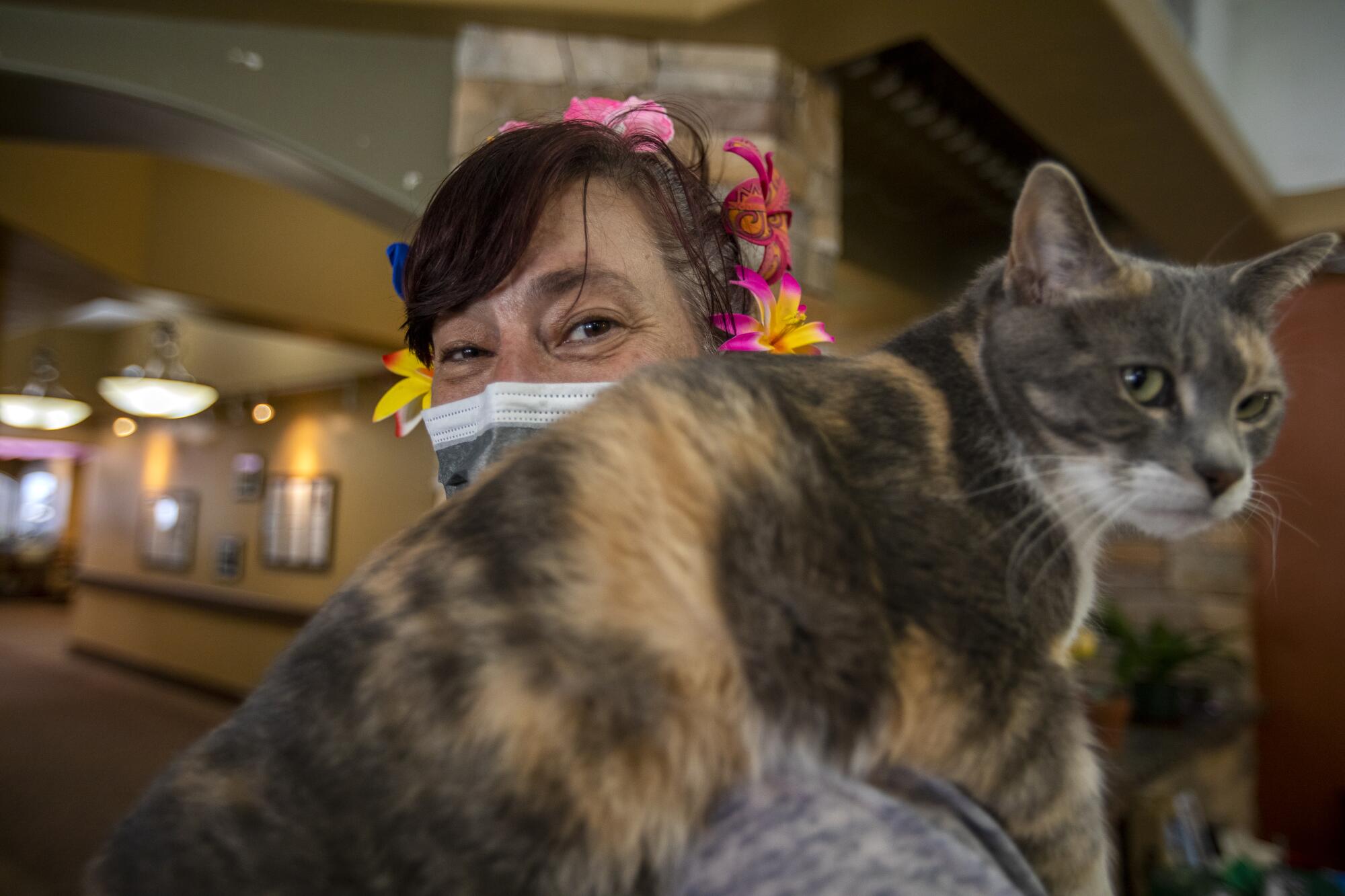
Harris, who cared for his mother while she was dying from cancer, was accused of dumping on a low-income neighborhood because other, wealthier ZIP codes wouldn’t allow it there.
He insists he does not see the facility as a detriment to the community, but a gift.
“When I think about people being discharged from the hospital, retching in the bushes because they’ve been on chemotherapy, I just can’t live with that,” he said. “Nobody should die without dignity out in the wild like that, no matter what conditions brought them into homelessness. They should not have to go through the end of life with nobody caring for them.”
The Inn Between faced opposition too.
Opponents of the Inn Between, like the critics in Sacramento, were convinced it would be a traditional shelter in disguise and would grow to serve more than just those in medical need — and cause problems for the neighborhood.
After the facility opened, the staff received calls anytime a resident at the inn — or anyone, for that matter, who appeared unfamiliar to neighbors — was spotted outside the building.
Suzanne Stephenson, who lives four houses down from the Inn Between, was the mouthpiece for what became known as the NIMBYs — the “not in my backyard” crowd.
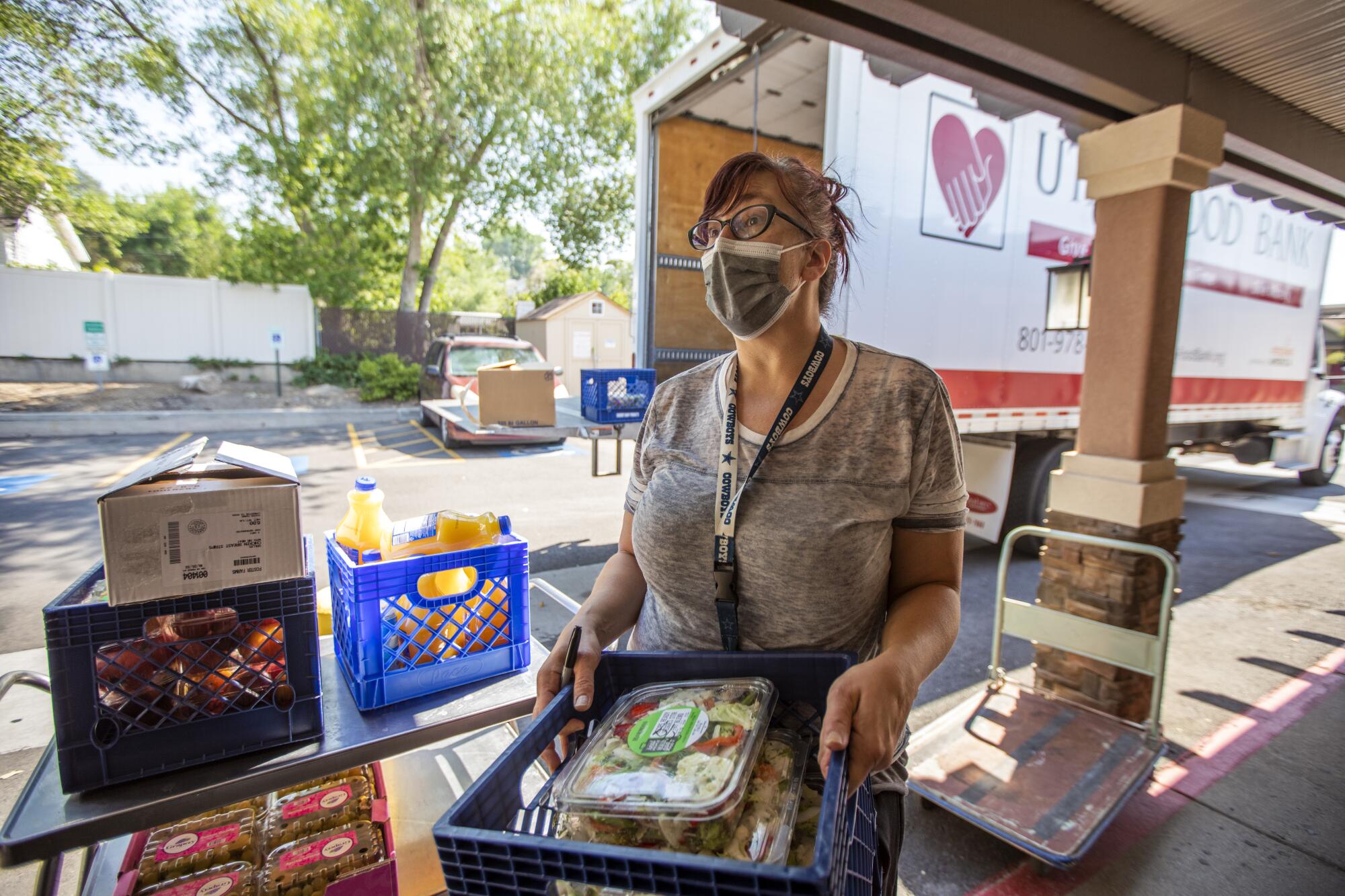
“We were made out to be the worst people in the world, but we were just worried about safety. Somebody actually came up the street in their wheelchair and went down the driveway across the house from me and hung around,” she said. “It made everybody very uncomfortable.”
But Stephenson has come around.
“I think it’s run so well now. All the NIMBYs sort of just went away,” she said. “There’s still a couple of residents in the neighborhood who are leery and who will just never ever accept and adapt. They still get a little bit nervous about it.”
On the same day that the world was transfixed on the passing of the Queen of England, death was just another part of life at the Inn Between.
“She was 96,” one resident, who is more than 30 years younger than Queen Elizabeth II, said crudely over a dinner of beef and sweet potatoes in the dining hall, as if to say, “duh.”
Kimberly Peterson laughed. She has recently become certified to be a death doula, and is also making peace with her own mortality.
“I’m like a midwife, but instead of helping bring people into the world, I help bring them out,” said 50-year-old Peterson, who has congestive heart failure.
When her health problems caused her to be unable to work and fall behind on rent, a doctor recommended the inn. When she first arrived in 2019, she was so afraid of death that she would avoid certain rooms. But now, she sits with residents, holding their hands as they transition.
Peterson recently stayed with a resident for five hours, who held onto her thumb until it was numb. She scrambled to find another resident’s wife in Vietnam so that they could use FaceTime to say goodbye. Peterson relished the fact that when another resident died, the nightmares from the war, which made him thrash in his sleep while she was at his bedside, had finally subsided.
Now she describes death as something sacred.
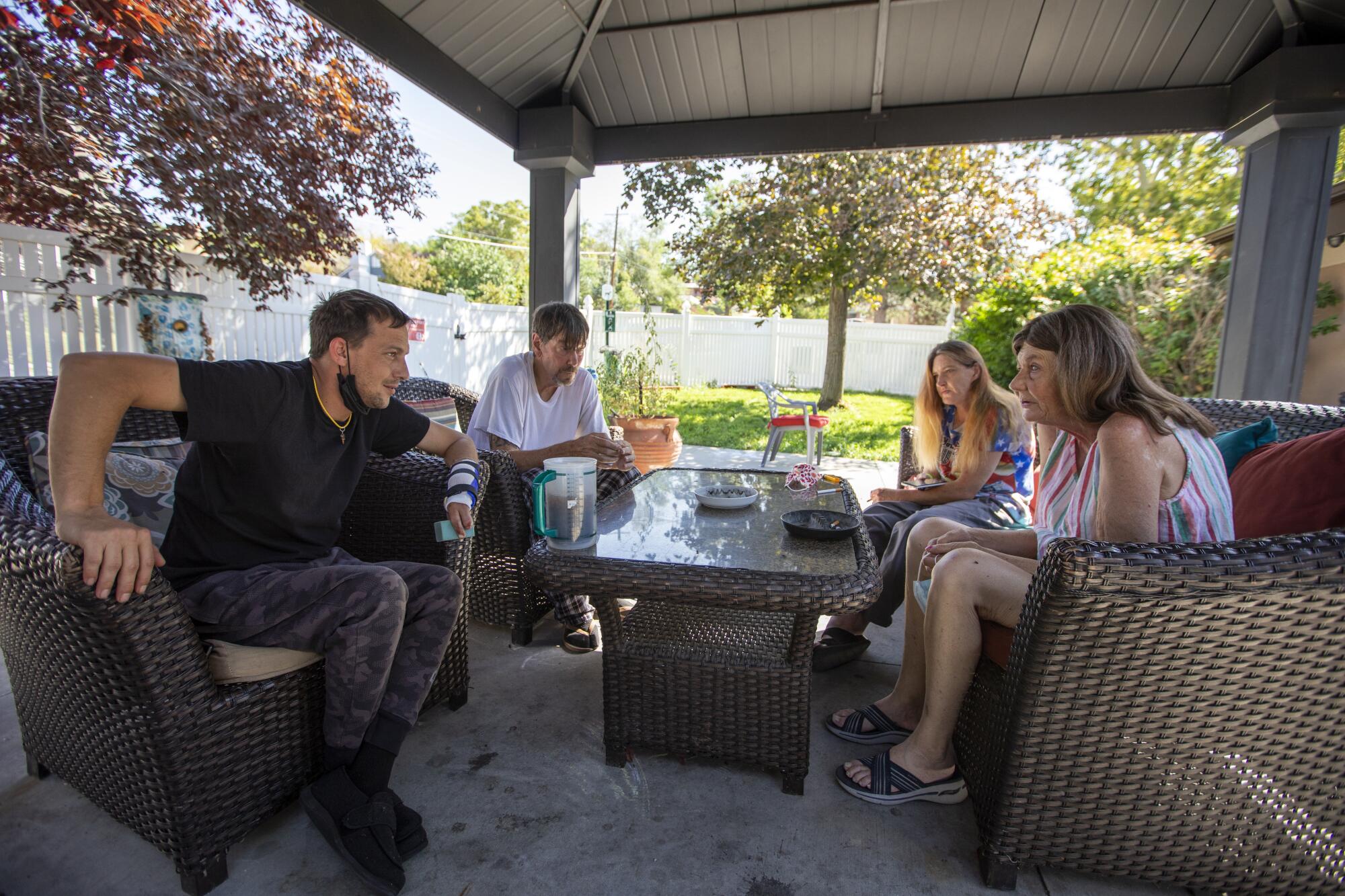
“When you see someone pass away with dignity and respect, and knowing they were loved, and they find peace, it’s the most beautiful thing in the world,” Peterson said through tears. “It breaks my heart that people wouldn’t accept a place like this.”
Larsen, whose cancer has spread beyond her lungs, spent more than 20 years living on the streets of Las Vegas. Decades of extreme sun exposure show on the lines on her face. She blames the dry climate for the loss of the vision in her left eye, which is glazed over with a milky hue thanks to an untreated scratch to her cornea.
At the inn, she has a bed, a recliner and a mini fridge. There’s a box saved from a McDonald’s happy meal sitting on the table.
Pictures of her now-adult children when they were in elementary school hang on the walls. She lost most of her belongings when she could no longer afford a storage building, including family photos, but her sister recently sent her these.
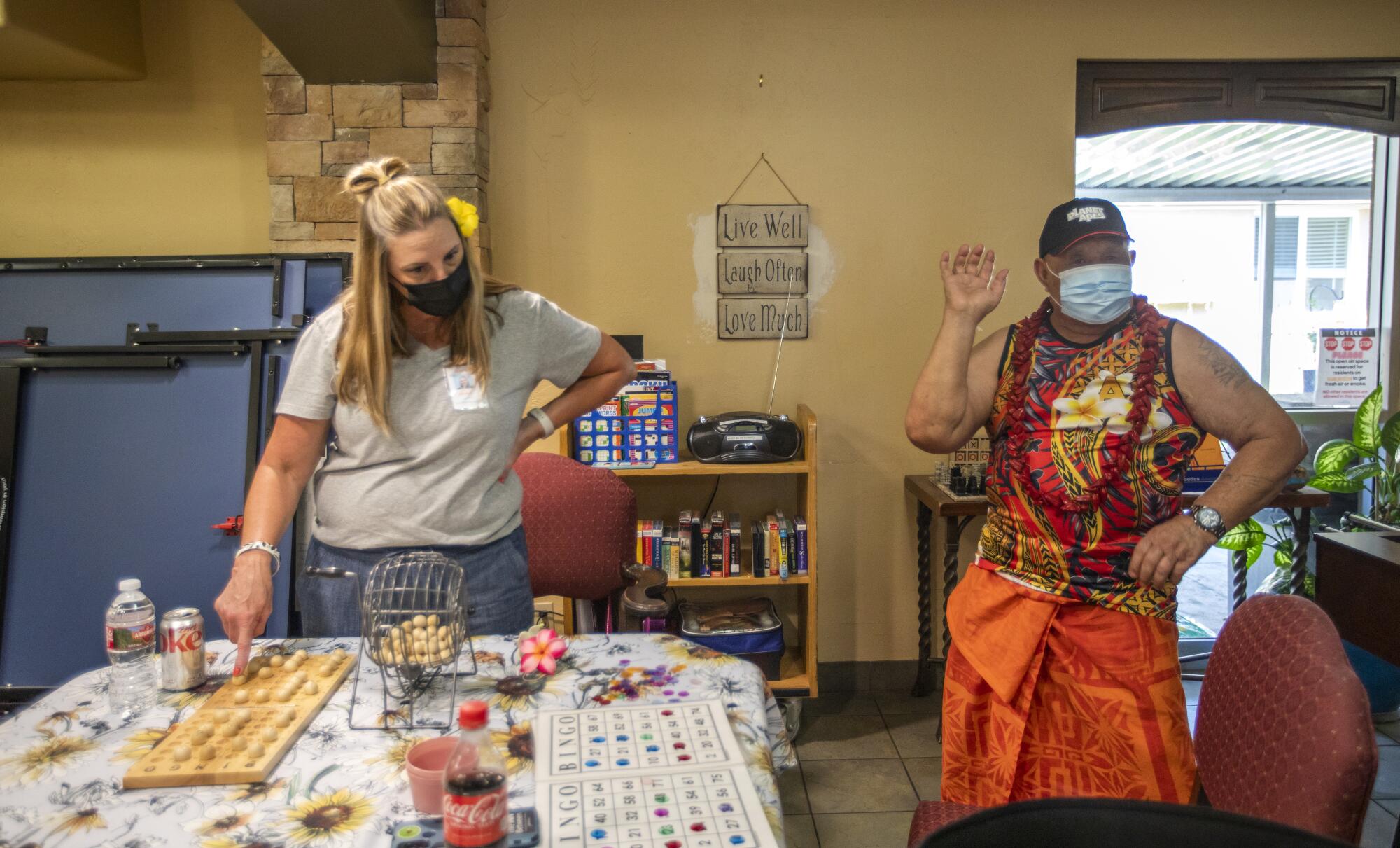
She has taped to the walls letters her nieces have sent, with messages like “hope you get better” drawn with a crayon and surrounded by hearts.
There are plants on the windowsill, recently donated by the local Trader Joe’s, and a pink wooden box that she painted herself that she stores candy in to offer to visitors.
A nurse reminds her to take her medicine every two hours, and to drink more water.
She remembers her life before. She used to use duct tape to secure her colostomy bag. Sometimes she would sneak into a parking garage to sleep in a concrete hallway at night. The surveillance cameras gave her comfort.
“The streets are hard. You’re always hunting,” she said. “I was robbed all the time. You never know if you’re going to be raped. The cops are always following you. You’ve just gotta do what you gotta do.”
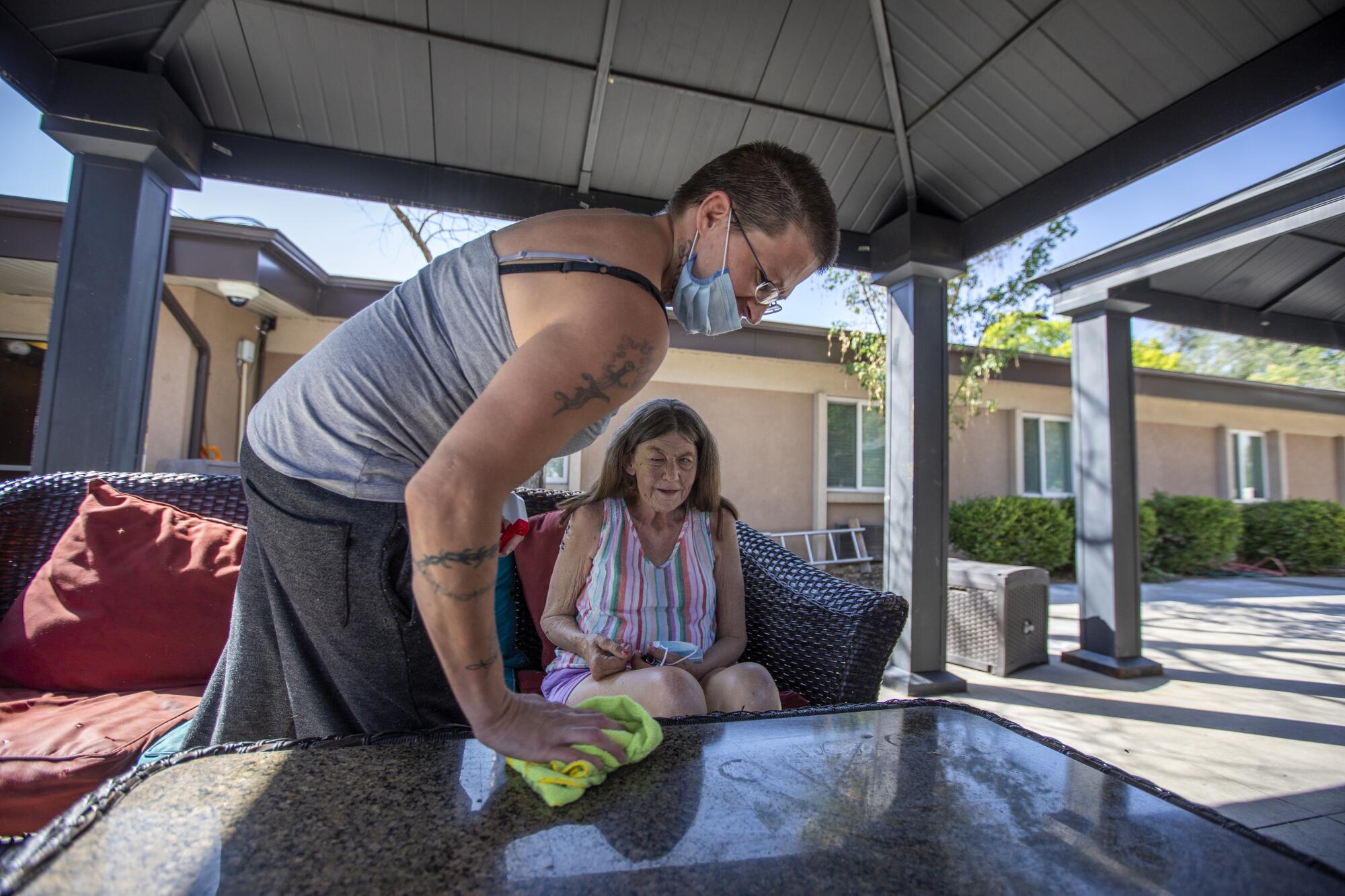
In her room, she wondered aloud if she would still be alive, if not for the Inn Between.
One day, maybe soon, a blue butterfly will be placed on her door, next to where she’s hung a “home sweet home” sign.
People like Olmsted and Peterson will sit by her bed. Maybe they will hold her hand. Maybe they will tell her a story.
What is for sure is that Larsen will not die outside, alone. She will be home.
- Share via
Watch L.A. Times Today at 7 p.m. on Spectrum News 1 on Channel 1 or live stream on the Spectrum News App. Palos Verdes Peninsula and Orange County viewers can watch on Cox Systems on channel 99.
More to Read
Sign up for Essential California
The most important California stories and recommendations in your inbox every morning.
You may occasionally receive promotional content from the Los Angeles Times.
